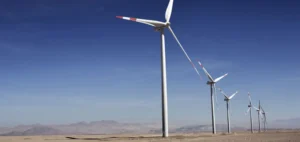Federal collaboration for offshore wind development has reached a critical milestone with a new Memorandum of Understanding (MOU) signed between the Bureau of Ocean Energy Management (BOEM) and the Department of Defense (DoD). This partnership aims to harmonize efforts to deploy offshore wind energy while ensuring the United States’ energy security and preserving military capacity on the Outer Continental Shelf (OCS).
The MOU was signed during the Offshore WINDPOWER conference in Atlantic City, as part of the Biden-Harris administration’s commitment to renewable energy. BOEM Director Elizabeth Klein and Assistant Secretary of Defense for Energy, Installations, and Environment Brendan Owens emphasized their commitment to establishing a robust offshore wind industry that coexists with oceanic uses, including military operations.
The DoD, which views the energy transition as critical for resource resilience and reliability, explained that this collaboration would align the country’s energy goals with national security requirements. Mr. Owens highlighted the importance of preserving essential training and testing capabilities for military readiness while accelerating the development of renewable energy infrastructure.
Defining Roles and Responsibilities
The MOU clarifies the roles of BOEM and DoD, particularly in offshore lease project review and coordination. The goal is to ensure early-stage planning to minimize potential impacts on military operations. This protocol includes participation in intergovernmental task forces specializing in renewable energy, allowing both organizations to collaborate from the initial stages of the offshore leasing process.
The DoD and BOEM also commit to regular information exchange and consultation with public and private sector stakeholders to define zones compatible with military activities. The protocol allows the DoD to identify areas that should be exempt from leasing to ensure that essential military activities on the OCS remain uninterrupted.
Biden-Harris Administration’s Renewable Energy Goals
This partnership directly supports the Biden-Harris administration’s ambitions to deploy 30 gigawatts of offshore wind capacity by 2030 and 15 gigawatts of floating wind capacity by 2035. These objectives aim to create well-paying jobs and contribute to the fight against climate change by increasing the share of renewable energy in the U.S. energy mix.
The current MOU complements an initial agreement signed in July 1983 between the DoD and the Department of the Interior, which provided a cooperative framework for energy resources on the OCS. The recently signed protocol goes beyond this historical agreement, enhancing coordination to meet the modern challenges of the energy transition.
Towards Sustainable Energy Compatible with National Defense
This strengthened interagency cooperation marks a significant step toward ensuring that renewable energy infrastructure development aligns with national defense needs. Through enhanced communication and integrated planning, BOEM and DoD aim to maximize OCS resource utilization while safeguarding military security essential for national protection.





















